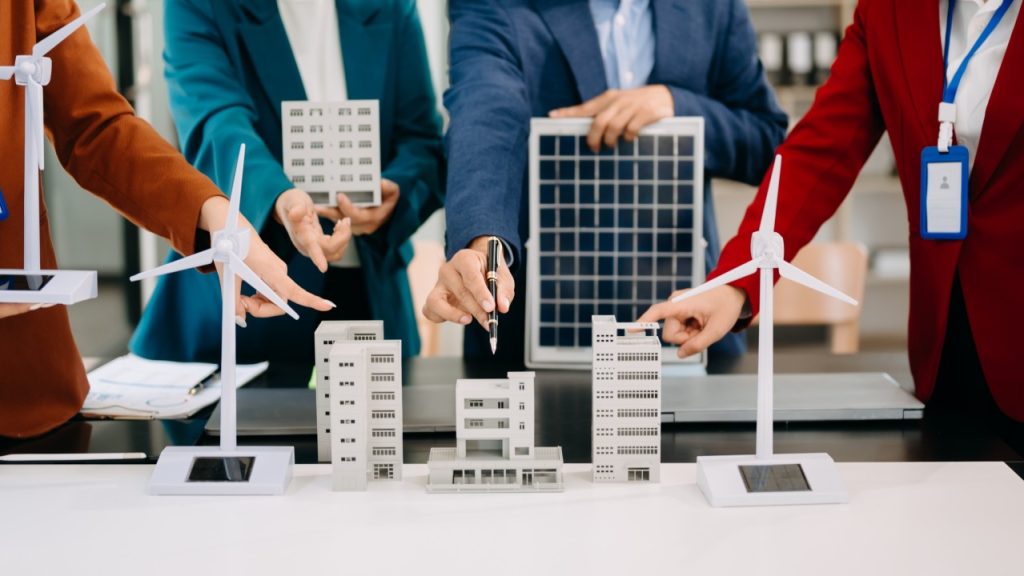Behind every major energy transition lies a complex web of financial machinery – an ecosystem where capital meets policy, and where advisory expertise determines what gets built, when, and how. The journey toward sustainable energy systems demands more than just technological solutions; it requires financial architects who can translate bold visions into bankable projects.
In this intricate dance of decarbonization, a select group of financial intermediaries operates as the critical link between ambition and execution, though their role often remains obscured from public view.
The financial backbone of such transitions typically involves a mix of state-backed investment vehicles and long-term savings pools, entities that increasingly prioritize sustainability-aligned allocations. These institutional investors serve as both capital providers and market signals, their investment committees swayed by technical analyses and risk assessments prepared by specialized consultants.
The strategic frameworks guiding these decisions often bear the fingerprints of global strategy firms, their recommendations shaping everything from project selection to implementation timelines.
Commercial lenders play an equally pivotal role, with domestic institutions frequently taking the lead in structuring tailored financial products for clean energy initiatives. Their credit committees weigh complex risk matrices, balancing traditional financial metrics with newer sustainability criteria.
The most sophisticated players have developed specialized green finance units, staffed by teams fluent in both renewable energy technologies and innovative financing structures. When deal complexity exceeds local capacity, cross-border financial institutions often enter the picture, bringing with them comparative experience from other markets and access to international capital pools.
The most capital-intensive projects frequently employ blended finance models, where different risk tranches attract different investor profiles. Here, financial advisors perform perhaps their most valuable function – designing layered capital structures that satisfy both development objectives and return requirements.
Their work involves meticulous risk allocation, ensuring that each participant in the financing stack finds the proposition appropriately compelling. Development finance organizations frequently participate in these arrangements, their involvement serving both to provide funding and to mitigate perceived risks for other investors.
Yet for all this financial engineering, persistent challenges remain. The translation of policy targets into investment pipelines often encounters friction, with timelines mismatched and risk appetites misaligned. While large-scale infrastructure tends to attract sophisticated financiers, newer technologies and emerging solutions sometimes struggle to find patient capital. There’s also the recurring tension between standardized approaches that enable scale and customized solutions that address local particularities.
Fintrade Securities notes that the true measure of success in financing energy transitions may ultimately lie in the degree to which these financial intermediaries make themselves obsolete – where clean energy projects become sufficiently de-risked and commonplace that they flow through conventional financing channels without requiring specialized treatment.
Until that point, the quiet work of structuring deals, allocating risks, and connecting capital with opportunities continues behind the scenes, performed by professionals whose names rarely appear in press releases but whose decisions shape the physical and economic landscape for decades to come.
In this critical period of energy system transformation, these financial architects hold perhaps disproportionate influence, their spreadsheets and term sheets serving as the unheralded blueprints for a more sustainable future.
#EnergyTransition #GreenFinance #SustainableInvesting #CleanEnergy #RenewableEnergy #FinancingTheFuture #BlendedFinance #ClimateFinance #Decarbonization #ESGInvesting #InstitutionalInvestors #DevelopmentFinance #InfrastructureFinance #GreenBonds #SustainableGrowth #CapitalMarkets #FinancialInnovation #EnergyPolicy #NetZero #SustainabilityGoals #FintechForGood #FintradeInsights #GreenEconomy #PublicPrivatePartnership #InvestmentStrategies

